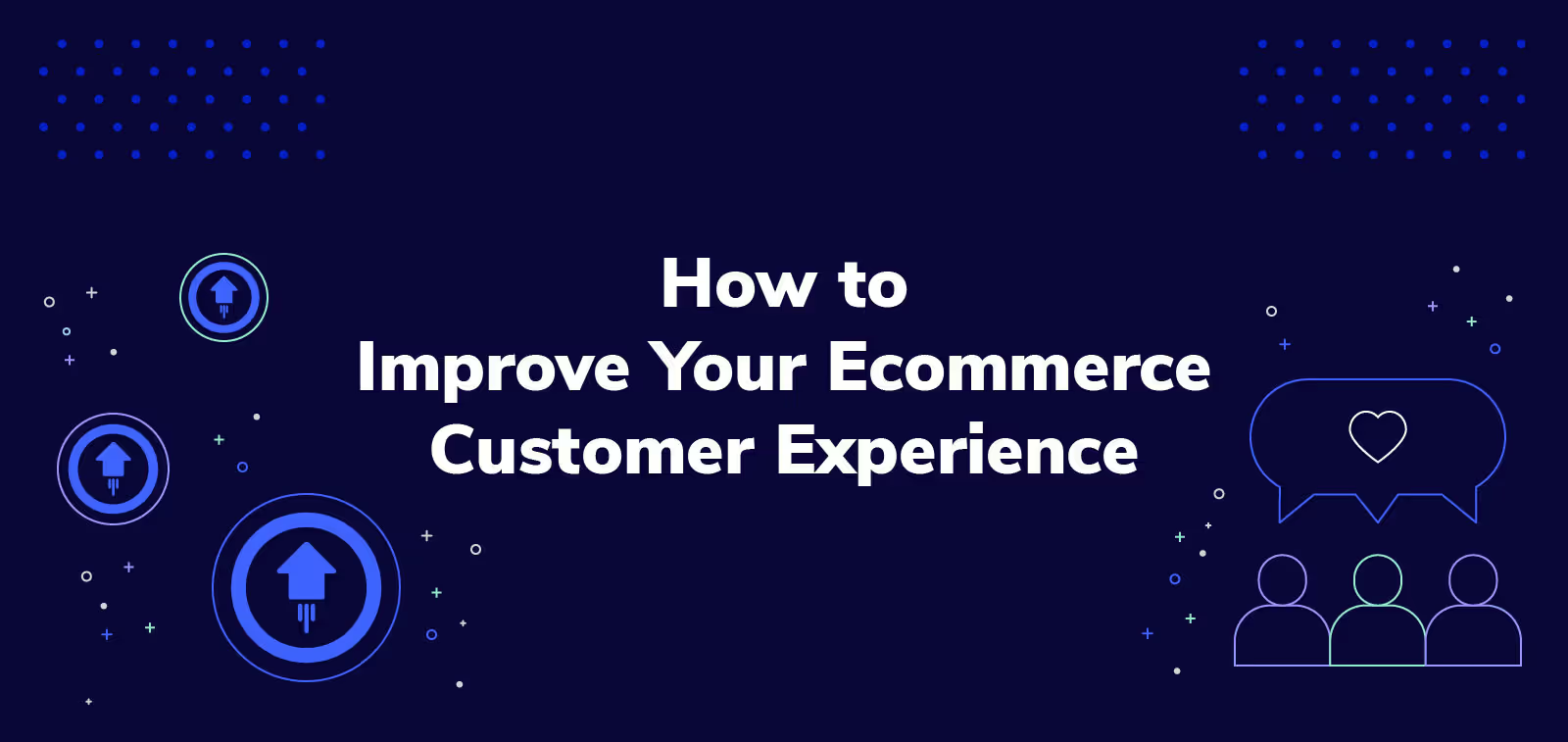The Best Customer Satisfaction Survey Questions (+ Tips and Examples)

Finding it tough to keep your customers happy? You're not alone. According to the American Customer Satisfaction Index, customer satisfaction scored a mere 73.4 at the end of 2022 — continuing a downward trend from an all-time high score of 77.0 in 2018.
To improve your standing with customers, find out what’s not working for your customers (and what is) by asking them. Customer satisfaction surveys (CSAT surveys), in particular, allow customers to leave responses that detail what you should improve.
Writing these questions can be tricky, so we're here to help. Read on to find sample customer satisfaction questions, survey best practices, and examples from major brands.
9 actionable CSAT questions
Vague or uninviting survey questions can lead your customers to abandon the questionnaire altogether. Below, you’ll find a summary of the three question types and 10 questions to use in your survey.
Keep your survey moving quickly while still getting information that’s helpful to your growth with these three question types:
- Rating — These questions ask your customers to express their feelings on a scale and are the fastest questions to answer. Most scales range from 1 to 10, with 1 being “not at all satisfied” and 10 being “completely satisfied.”
- Multiple choice — These questions present your customers with pre-written answers, so they can quickly select their feedback and move on. Depending on the question, you can require customers to pick just one answer option or select multiple options, so you can gauge which answers are truly the most impactful for each customer.
- Open-ended — These questions give customers the opportunity to type their own answers in a text box and use their own words. We recommend presenting optional text boxes alongside multiple-choice and rating questions, that way customers can share helpful details if they want to.
To see these question types in action, consider these nine examples. We'll break down why these questions are great for gauging customer satisfaction and which format — rating, open-ended, or multiple choice — makes the most sense for each one.
1. How well did our product satisfy your needs?
Type: Rating
This question gets to the most important point: whether or not your customer was satisfied with their purchase. We recommend giving the customer a scale of 1 to 10 (with 1 being unsatisfied and 10 being very satisfied) to answer the question. By leading with this question, you’ll get an impression of the customer’s overall brand experience right away.
2. Which features of our product are the most useful to you?
Type: Multiple choice + open-ended
Suggest product features as multiple choice answers for this question and have “Other” be a suggestion that leads to an open-ended answer text box. Pass along customers' responses to your company's product team so they know which features are worth investing in (and which to eliminate all together).
3. Do you feel our product is missing any features?
Type: Open-ended
Customers may be eager to answer this question if there’s a specific issue on their mind, so it’s best to allow them to provide an open-ended answer. Like the previous question, pass this information along to your company’s product team so they know what features to focus on adding in the future.
4. What did you like about the shipping aspect of your purchase?
Type: Multiple choice + open-ended
Your multiple choice answers should cover cost, delivery time, ability to ship to your location, returns, customer support, tracking, and item condition upon arrival. Make sure to leave an “Other” option that leads to an open-ended answer box.
Pass this information along to your logistics department so they know how their delivery process is working.
5. Was there anything you didn’t like about the shipping aspect of your purchase?
Type: Multiple choice + open-ended
Your multiple choice answers should cover the same topics as the previous question: cost, delivery time, ability to ship to your location, returns, customer support, tracking, and item condition upon arrival. Leave an “Other” option that leads to an open-ended answer box.
Pass this information along to your logistics department so they know which areas to focus on improving in the future.
6. How easy was it to find the product you were looking for?
Type: Rating + open-ended
The answer to this question can be a rating scale from 1 to 10, with 1 representing very difficult and 10 representing very easy. Include an optional text box with the question in case customers want to share details about what made the product search easy or difficult.
Pass these responses along to your marketing and web design teams so they can see how well their promotional efforts are performing.
7. How likely would you be to recommend us to a friend?
Type: Rating
The answer to this question can also be a rating scale from 1 to 10, with 1 representing “not likely” and 10 representing “very likely,” and will inform whether or not a customer is willing to provide the recommendations that companies thrive on.
Pass this information along to the appropriate teams, which could be product, engineering, or support, so they can see if customers are responding well enough to share the product with friends.
8. Where do you think we can improve?
Type: Open-ended
This broad question provides a catch-all opportunity for customers to say anything else that might be on their minds. Provide a text box so customers can answer this simple question in their own words.
9. What do you like most about our product protection plan? (if applicable)
Type: Multiple choice + open-ended
A quality product protection plan gives customers the assurance they need to feel comfortable with their purchase. Brand trust will encourage loyal customers to make purchases in the future, so this customer feedback is important to capture if it’s applicable to your business.
Your multiple choice answers should cover protection plan basics — like customer service, product replacement time, how easy it was to complete the process, response time, overall coverage, and accident coverage. Include an open-answer option in case there’s anything else your customers would like to mention.
Pass this information on to your product protection provider to let them know what they’re doing well. If you don’t seem to be getting much positive feedback, you might want to switch to a new product protection provider.
Best practices for writing actionable CSAT surveys
With the sample questions above, you’re ready to create your own survey (and maybe add in a few questions of your own). The key here is to make the survey completion process easy and let your customers know their feedback is appreciated.
Start by asking for an overall rating
This is the best way to gauge your customer’s initial impression about some aspect of the brand experience — whether that’s a product purchase or a support interaction. Asking this question first introduces the customer to your survey in a simple and approachable way. This first question might be, “How well did our product satisfy your needs?” or “How was your overall experience?”
Keep your questions and overall survey short
Limit your questions to one sentence only. No one likes a long-winded question, so keep yours brief to encourage responses.
Customers also don’t want to spend more than a few minutes on a survey, so limit yours to 10 questions or less.
Order your questions to avoid bias
The order of your questions and response options can matter in some survey situations because the order can affect bias. In political opinion surveys, for example, choosing to lead with a question about gerrymandering might bring that issue to front-of-mind when asking for an overall impression of a party’s recently proposed new laws.
This concept applies to CSAT surveys as well, but on a less extreme scale. We generally recommend leading with an overall impression question to get an unbiased response, but after that, the categories don’t tend to bleed as much as they do with other surveys. In short, order your CSAT questions however you’d like, but be aware of how bringing up specific details can create bias in future answers as the survey progresses.
Be timely with your survey
Whatever you’re surveying customers about, you want the experience to be fresh in their memory. Otherwise, they may struggle to recall details and provide unhelpful responses.
Send customer satisfaction surveys about products a week after customers receive their deliveries. This time frame gives them a few days to try out the product and decide how they feel about it.
For customer support interactions, send surveys within a few hours after the ticket is completed. Customers might be more motivated to respond if the service experience happened recently and they can still remember all of the details.
Don’t require an answer for every question
There may be some answers that customers want to skip, and it’s better to let them do that than to have them fill in inaccurate information. This flexibility will also help minimize survey abandonment.
How 4 big brands use CSAT surveys
The layout you choose, the length of your survey, and intangibles like the marketing angle all determine the results your survey will bring. This is how four major brands use their CSAT surveys.
Chipotle: Sequential question-by-question layout
Chipotle’s survey expands sequentially as you answer questions, which gives it an organic flow. It presents only one question at a time and doesn’t require additional load time or renavigating to another page. These smooth design features get the customer in a rhythm and hold their attention.


While customers can complete the survey by clicking multiple choice buttons, they can also click “Other” — which turns into an open-answer box on the same page — if they want to provide more details.
Uniqlo: Straightforward layout
Uniqlo has its questions all laid out on one page, so customers can jump around and answer whichever questions they’d like. The layout is minimal, and the questions are very short, making the survey inviting to customers.

After short but detailed questions about in-store experience, Uniqlo provides an open-ended space to elaborate on any of your answers.
CamScanner: All-encompassing questions
CamScanner asks how likely you’d be to refer one of your friends to the app on a scale of 1 to 10 and then asks you to explain with multiple choice answers. And that’s the entire survey! With such specific multiple choice answers, CamScanner gets all of the information it needs from customers with just a few questions.

The brand also gives customers the opportunity to give an open-ended answer by selecting “Other.”
Sheets Laundry Club: Encouraging word-of-mouth marketing
Instead of just surveying customers, Sheets Laundry Club also encourages respondents to promote the product to their friends on social media. Obviously, you wouldn’t ask a customer to post their answers to a 10-question survey on Twitter, so this survey is appropriately short.

Put survey feedback into action with reliable value-added services
As you take in review feedback and use it to improve your brand experience, consider adding value-added services that customers will use, like product protection and shipping protection. Regardless of what product you sell, Extend will give you and your customers the peace of mind that comes with having reliable protection for their products and deliveries. Click here to schedule a free demo with Extend today.
Aaron Sullivan is senior content marketing manager at Extend. He specializes in writing about e-commerce, finance, entertainment, and beer.
.svg)






























